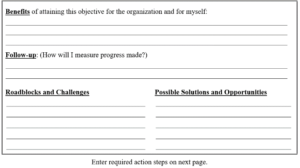Affirmations are highly effective to support a goal to change a behaviour or to modify a negative self image. You must be clear on your goal or the change you want to have about yourself. My previous articles and videos on the behaviour change process is a great way to get started on clarifying your goal.
Characteristics of an Affirmation
- Affirmations need to be written in the present tense as if the behaviour or change is reality. This works on changing your subconscious belief about yourself.
- The affirmation should be congruent with your goal statement.
- The affirmation should be positive
Example of an Affirmation
 Using myself as an example for the personal behavioural change goal I am working on, this is my affirmation:
Using myself as an example for the personal behavioural change goal I am working on, this is my affirmation:
- I am patient and diplomatic.
This supports my following goal statement:
- When things are not going at the pace I like or being done the way I want, take a diplomatic and positive approach with the person or those responsible for the task and show patience and support
The above affirmation supports the following desired behavioural change:
- Impatient and too controlling with people when things are not going fast enough or done the way I think they should be
How to use an Affirmation
An affirmation should be repeated frequently throughout the day in order for it to form a new belief in the subconscious mind. It will disrupt your current belief and cause you to respond differently in the present moment without having to think about it.
A good practice would be to take a few minutes to relax for a few minutes three times a day to repeat the affirmation to yourself. Sit in a comfortable chair or lay down, close your eyes and concentrate on taking a few deep breaths to relax. Repeat the affirmation several times and out loud if you can. Do this upon rising in the morning, after lunch and before bed.
Adding visualization techniques can make affirmations even more effective. I’ll cover this in my next article and video.

